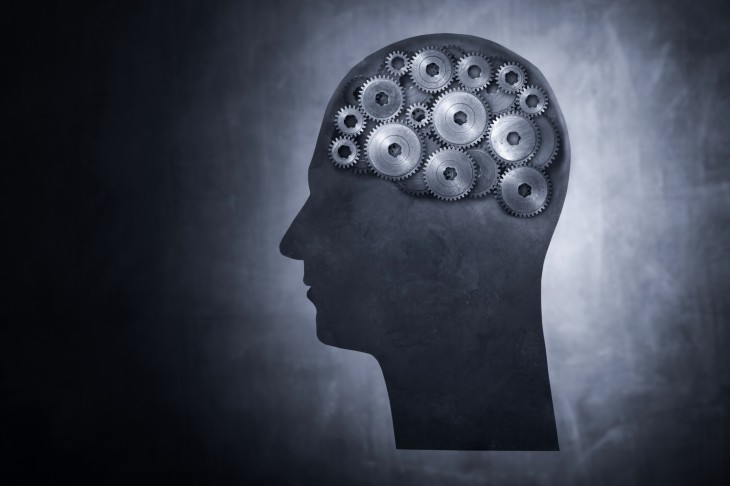The firm has also designed a chip that can handle signals from as many as 3,072 electrodes
該公司還設(shè)計(jì)了一種芯片,可以處理多達(dá)3072個(gè)電極發(fā)出的信號(hào)
—30 times more than current systems—and transmit them wirelessly.
—是目前系統(tǒng)的30多倍—并將它們無(wú)線傳輸。
The real magic, however, kicks in only when the output is analysed—which happens in real time.
然而,真正的魔力只有在分析輸出時(shí)才會(huì)發(fā)揮作用——這是實(shí)時(shí)發(fā)生的。
Looked at superficially, neurons in the brain seem to fire at random.
從表面上看,大腦中的神經(jīng)元似乎是隨機(jī)放電的。
Software can, though, detect patterns when the individual those neurons are in does certain things.
不過(guò),當(dāng)這些神經(jīng)元所在的個(gè)體在做某些事情時(shí),軟件可以檢測(cè)出它們的模式。
Stick enough electrodes into someone's motor cortex, for instance,
例如,在人的運(yùn)動(dòng)皮層中植入足夠的電極,
and it is possible to record what happens in the brain when he types on a keyboard or moves a mouse around.
當(dāng)他在鍵盤(pán)上敲字或是移動(dòng)鼠標(biāo)的時(shí)候可以記錄他的大腦發(fā)生了什么。
Those data can then be used to control a computer directly. Conversely, the electrodes can be employed to stimulate neurons,
這些數(shù)據(jù)可以用來(lái)直接控制電腦。相反,電極可以用來(lái)刺激神經(jīng)元,
perhaps to give the person in question the feeling of touching something.
也許是為了給上述問(wèn)題中的人一種觸摸的感覺(jué)。
Neuralink has already tested its system successfully on rats and monkeys. These were, it says, able to move cursors on screens with it.

Neuralink已經(jīng)在老鼠和猴子身上成功測(cè)試了它的系統(tǒng)。其表示它們能夠用該系統(tǒng)在屏幕上移動(dòng)光標(biāo)。
The firm now hopes to work with human volunteers, perhaps as early as next year should America's Food and Drug Administration play along.
現(xiàn)在公司希望能和人類(lèi)自愿者合作,也許最早在明年,美國(guó)食品和藥物管理局就應(yīng)該參與其中。
The first goal is to use the technology to help people overcome such ailments as blindness and paralysis.
第一個(gè)目標(biāo)是用這項(xiàng)技術(shù)幫助人們克服失明和癱瘓等疾病。
Neuralink is, however, clearly aiming for a bigger market than this.
但Neuralink的目標(biāo)顯然是更大的市場(chǎng)。
It has also designed a small device that would sit behind someone's ear,
公司還設(shè)計(jì)了一款小型設(shè)備,可以放在人耳后
picking up signals from the implanted chip and passing them on as appropriate.
從植入芯片中獲取信號(hào),并將其適當(dāng)?shù)貍鬟f下去。
In a few years, using a brain implant to control your devices may be as de rigueur among San Francisco's techno-chics as wearing wireless earbuds is today.
在幾年內(nèi),使用大腦植入來(lái)控制你的設(shè)備或許就會(huì)像現(xiàn)在佩戴無(wú)線耳機(jī)一樣成為舊金山科技潮人的必備之物。
Ultimately, Mr Musk predicts, neural lace will allow humans to merge with AI systems, thus enabling the species to survive.
馬斯克預(yù)測(cè),最終,神經(jīng)蕾絲將使人類(lèi)與人工智能系統(tǒng)融合,從而使物種得以生存。
Though, as this announcement shows, Mr Musk does have a habit of presenting himself as the saviour of the human race
不過(guò),正如上述聲明所示,馬斯克確實(shí)有一個(gè)習(xí)慣,就是把自己塑造成人類(lèi)的救世主
(his desire to settle Mars seems motivated partly by fear of what might, in the future, happen to Earth),
(他定居火星的愿望似乎部分是出于對(duì)未來(lái)可能發(fā)生在地球上的事情的恐懼),
the idea that some machines at least will come under the direct control of human brains seems plausible.
至少有一些機(jī)器將直接受人腦控制的想法似乎是可信的。
The biggest obstruction to this happening will probably not be writing the software needed to interpret brainwaves,
其最大的障礙可能不是編寫(xiě)解譯腦電波所需的軟件,
but rather persuading people that the necessary surgery, whether by sewing machine or otherwise, is actually a good idea.
而是說(shuō)服人們,不論是用縫紉機(jī)還是其他方式,必要的手術(shù)其實(shí)是一個(gè)好主意。
譯文由可可原創(chuàng),僅供學(xué)習(xí)交流使用,未經(jīng)許可請(qǐng)勿轉(zhuǎn)載。



